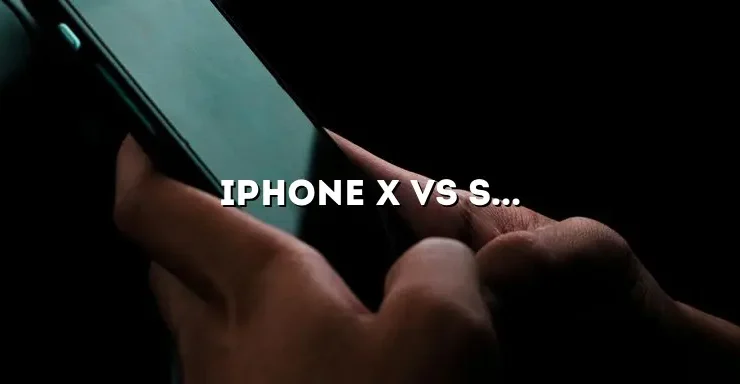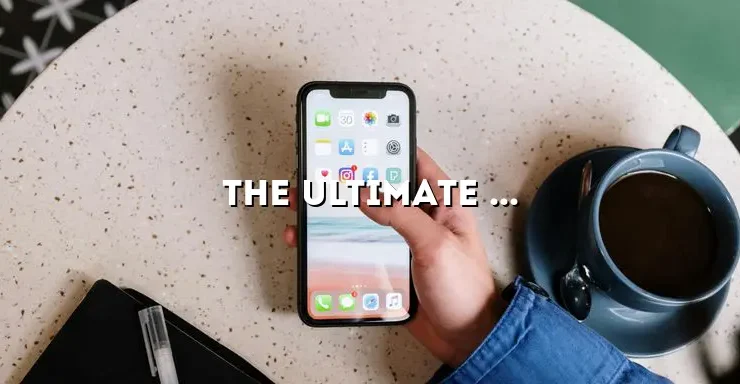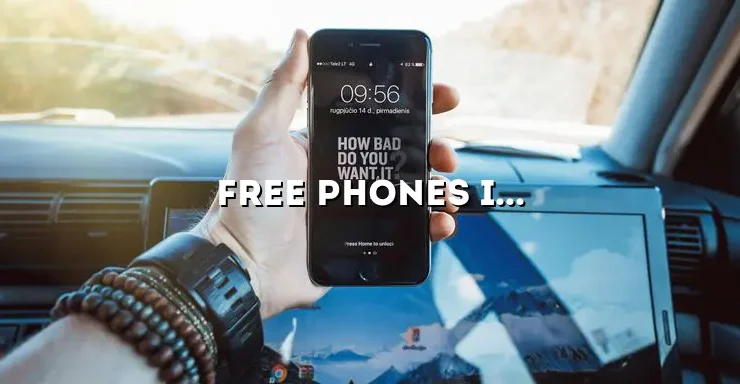
With the ever-evolving world of smartphones, it can be challenging to keep up with the latest releases and understand the differences between them. Two popular models that often catch the attention of Apple enthusiasts are the iPhone X and the iPhone SE. In this blog article, we will delve into a detailed and comprehensive comparison of these two iPhones, providing you with valuable insights to help you make an informed decision.
Firstly, let’s explore the design and display of these two devices. The iPhone X boasts a sleek and modern design with its edge-to-edge Super Retina OLED display, providing immersive visual experiences. The display is a standout feature, stretching from edge to edge and offering vibrant colors and deep blacks. This OLED display also offers better contrast and wider viewing angles compared to the iPhone SE’s Retina HD display. On the other hand, the iPhone SE retains a more classic design, resembling the beloved iPhone 5s, with its smaller 4.7-inch Retina HD display. Although the display is not as large or as high-resolution as the iPhone X, it still delivers excellent clarity and sharpness for everyday use.
Design:
When it comes to design, the iPhone X takes a futuristic approach with its bezel-less display, Face ID, and glass back, giving it a premium and sophisticated look. The stainless steel frame adds to its overall durability and elegance. On the other hand, the iPhone SE offers a more familiar design, reminiscent of the iPhone 5s, with its aluminum frame and Touch ID. The iPhone SE’s compact size makes it more comfortable to hold and operate with one hand, especially for users who prefer smaller smartphones. Additionally, the iPhone SE comes in a variety of colors to choose from, including black, white, and PRODUCT(RED), allowing users to express their personal style.
Performance:
Performance is a crucial aspect to consider when comparing these two iPhones. The iPhone X is powered by the A11 Bionic chip, which was a significant leap in performance when it was first introduced. This chip offers faster processing speeds, improved graphics performance, and better power efficiency. It enables seamless multitasking and smooth performance even when running resource-intensive applications. On the other hand, the iPhone SE is equipped with the A13 Bionic chip, which is the same chip found in the iPhone 11 series. While the A13 chip may not be the latest available, it still delivers impressive performance for everyday tasks, including web browsing, social media, and light gaming. However, it may struggle with more demanding applications or heavy multitasking compared to the iPhone X.
Camera:
Photography enthusiasts often prioritize the camera capabilities of a smartphone. The iPhone X features a dual 12-megapixel rear camera system, consisting of a wide-angle lens and a telephoto lens. This setup allows for optical zoom, portrait mode, and advanced image stabilization. The telephoto lens also enables better depth of field and more professional-looking photos. With the iPhone X’s camera, you can capture stunning images in various lighting conditions and take advantage of features like Smart HDR and Night mode for enhanced low-light photography. On the other hand, the iPhone SE sports a single 12-megapixel rear camera, which still captures impressive photos with good detail and color accuracy. However, it lacks the advanced features and versatility of the iPhone X’s dual camera system, such as optical zoom and portrait mode.
Battery Life:
Battery life is a crucial factor to consider, especially for users who heavily rely on their smartphones throughout the day. The iPhone X boasts a larger battery capacity compared to the iPhone SE, allowing for longer usage time. With typical use, the iPhone X can easily last a full day without needing to be recharged. However, it’s important to note that battery life can vary depending on individual usage patterns and settings. On the other hand, the iPhone SE’s battery life is still respectable, but it may require more frequent charging, especially for heavy users. Both iPhones support fast charging, allowing for quick top-ups when needed.
Display:
The display is one of the most noticeable differences between the iPhone X and the iPhone SE. The iPhone X’s edge-to-edge OLED display offers vibrant colors, deep blacks, and excellent contrast. This display technology also provides better HDR (High Dynamic Range) capabilities, resulting in more lifelike and immersive viewing experiences. The OLED display also offers wider color gamut and superior viewing angles compared to the iPhone SE’s Retina HD display. The iPhone SE’s display, although not as large or as high-resolution as the iPhone X’s, still delivers excellent sharpness and clarity for everyday use. It offers accurate color reproduction and sufficient brightness for most lighting conditions.
Storage Options:
When it comes to storage options, the iPhone X offers a more extensive range to cater to different user needs. It is available in 64GB and 256GB variants, providing ample space for storing photos, videos, and apps. The 256GB option is particularly suitable for users who require a significant amount of storage for media files and large applications. On the other hand, the iPhone SE offers more limited options, starting with a base storage of 64GB and a higher-tier option of 128GB. While 64GB may be sufficient for many users, those who heavily rely on media consumption or require more storage for apps and files may find the iPhone X’s storage options more appealing.
Price:
Price is often a significant consideration when purchasing a smartphone. The iPhone X, being a flagship device with advanced features and premium design, comes with a higher price tag. It is positioned as a high-end offering from Apple, catering to users who prioritize cutting-edge technology and are willing to invest in the latest innovations. On the other hand, the iPhone SE offers a more budget-friendly option for those who are looking for an Apple device without breaking the bank. It provides a great entry point into the Apple ecosystem, offering many of the core features found in the iPhone X at a more affordable price point. The iPhone SE strikes a balance between performance, design, and price, making it an attractive choice for cost-conscious consumers.
Future-Proofing:
Future-proofing is an essential aspect to consider when investing in a smartphone. The iPhone X introduced several innovative features that have become standard on newer iPhones. One of these features is Face ID, which provides secure and convenient authentication using facial recognition technology. Face ID is not available on the iPhone SE, as it retains the Touch ID fingerprint sensor for biometric authentication. Additionally, the iPhone X’s powerful A11 Bionic chip, combined with its advanced neural engine, lays the foundation for augmented reality (AR) applications. AR has gained popularity in various fields, including gaming, education, and e-commerce. While the iPhone SE does not offer the same level of future-proofing as the iPhone X, it still guarantees regular software updates and compatibility with the latest iOS versions, ensuring a smooth user experience and access to new features.
In conclusion, the iPhone X and iPhone SE cater to different user preferences and budgets. The iPhone X excels in terms of design, display, performance, camera capabilities, and battery life. It offers a futuristic design, a larger edge-to-edge display, a powerful processor, advanced camera features, longer battery life, and more storage options. However, if you prefer a more compact device with a lower price point, the iPhone SE might be the ideal choice for you. The iPhone SE combines a classic design, a compact display, respectable performance, good camera capabilities, and a budget-friendly price. Consider your priorities and needs carefully to make the right decision that aligns with your requirements and budget.






